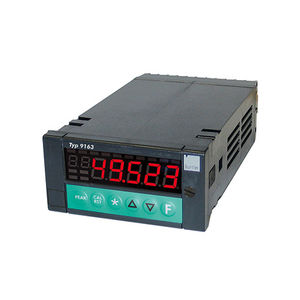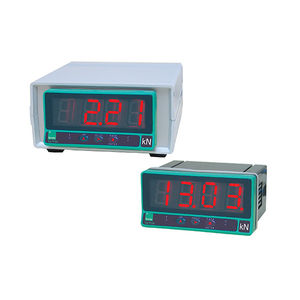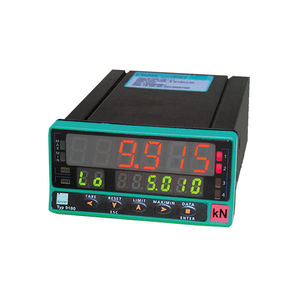
- Detection - Measurement
- Flow, Pressure and Level Measurements
- Differential pressure transmitter
- burster präzisionsmesstechnik gmbh & co kg
- Company
- Products
- Catalogs
- News & Trends
- Exhibitions
Differential pressure transmitter 8303membrane4-20 mA0-5 V

Add to favorites
Compare this product
Characteristics
- Pressure type
- differential
- Technology
- membrane
- Output
- 4-20 mA, 0-5 V
- Process connection
- G 1/4
- Fluid
- for gas, for liquids
- Material
- stainless steel
- Protection level
- rugged
- Other characteristics
- with amplified output
- Pressure range
Max.: 10 bar
(145.04 psi)Min.: 0.5 bar
(7.25 psi)- Process temperature
Max.: 85 °C
(185 °F)Min.: -25 °C
(-13 °F)
Description
8303 DIFFERENTIAL PRESSURE TRANSMITTER
The pressure transmitter illustrated here measures differences in pressure between the two connections of the measuring element. Pressure differences can be measured with respect to a reference pressure, such as atmosphere, or to the command variable of a regulation system. Equally, however, it is possible to measure pressure differences within systems that have a high static pressure. One practical example of this would be measuring a flow rate by determining the pressure drop occurring across a metering diaphragm.
The differential pressure transmitter measures in both directions and can therefore, for instance, be used on double-acting hydraulic cylinders. Its construction permits it to be used with liquid or gaseous media. Venting holes simplify installation. The robust design and the use of stainless steel make it possible to use the pressure transmitter under tough operating conditions.
It is fitted with integrated electronics to make the pressure transmitter even easier to use. This delivers the usual current or voltage outputs familiar in measurement and control engineering.
The differential pressure transmitter has a chamber on each pressure port. The chambers are separated by a diaphragm. Coils are located, and hermetically sealed, within the two halves of the sensor housing on both sides of the diaphragm. If there is a difference in the pressures on the two sides of the center element, the diaphragm is deflected from its rest position. As a result, the reluctance of the two coils, which are wired as differential inductances, changes.
Other burster präzisionsmesstechnik gmbh & co kg products
measuring instruments
Related Searches
- Pressure transmitter
- Analog pressure transmitter
- Membrane pressure transmitter
- Relative pressure transmitter
- Stainless steel pressure transmitter
- Waterproof pressure transmitter
- Absolute pressure transmitter
- Gas pressure transmitter
- Liquid pressure transmitter
- Threaded pressure transmitter
- Compact pressure transmitter
- IP65 pressure transmitter
- Pressure transducer
- Differential pressure transmitter
- IP67 pressure transmitter
- Precision pressure transmitter
- Analog pressure transducer
- Membrane pressure transducer
- Relative pressure transducer
- Stainless steel pressure transducer
*Prices are pre-tax. They exclude delivery charges and customs duties and do not include additional charges for installation or activation options. Prices are indicative only and may vary by country, with changes to the cost of raw materials and exchange rates.





















